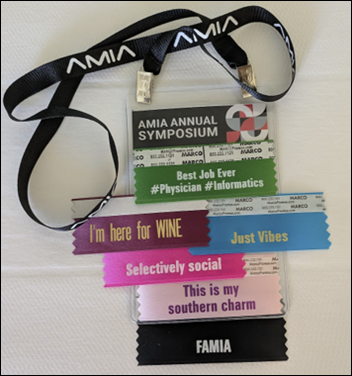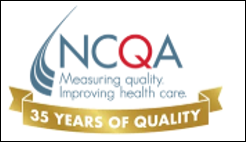EPtalk by Dr. Jayne 12/18/25
I interact with medical students and residents from different institutions. I have learned that the education that they receive about AI and its role in healthcare is highly variable.
The American Medical Association is taking a run at addressing this problem. I’m glad to see someone calling it out, but unfortunately, AI tools are already deeply ingrained in user workflows. Like anything in life, it’s difficult to undo bad habits, especially when they are perceived as creating value.
A resolution was introduced at the AMA Interim Meeting to create a policy that supports the development of “model AI learning objectives and curricular toolkits.” These would be aligned not only with AMA policies, but also the principles of the Association of American Medical Colleges. The AMA also plans to work with medical organizations to identify AI literacy elements, support CME offerings on the topic, and advocate for funding and resources to promote AI training initiatives.
From Jimmy the Greek: “Re: the holiday gift that keeps on giving. My employer just dropped its new in-office requirements for those who live within a certain radius of one of our locations – four days per week, eight hours per day in the same office. People leaders must be on site for at least one week per month, meaning that our boss will travel 12 hours to the mother ship. It’s going to be a huge waste of money. They are trying to sell it by promising contests and celebrations. It also appears that part of their ‘enhanced office experience’ includes setting the paper towel dispensers in the restrooms to give you about three inches of paper towel per wave with an eight-second timeout. How about letting me enhance my workday by allowing me to effectively wash and dry my hands during cold and flu season?”
I theorize that this organization is trying to lose people through attrition by tightening its control over work locations. I’ve seen companies use this strategy when they’re trying to unload late-career remote employees who don’t want to do the travel and who are likely to be higher on the pay scale than others.
The talk of expanded benefits to being in the office seems like a standard corporate attempt to justify imposing a policy that doesn’t make sense for everyone. I’ve worked in-person, hybrid, and fully remote. All of them have pros and cons depending on the company’s structure. For teams that work closely together, physical proximity can be an advantage. However, making someone go to an office four days a week when none of their team members work there is just silly, as is policing the restroom supplies.
A colleague clued me in to a New York Times article about a writer who tried to spend 48 hours without using any AI technologies. He was surprised at the breadth of AI’s penetration into daily activities, including weather forecasting, environmental monitoring, and supply chain management. It must be noted that the definition of AI used in the experiment included both generative technologies and machine learning.
In addition to forgoing social media, the author also avoided podcasts (due to the potential for AI editing) and most news outlets as well as email services. The article jumped the shark a bit, however, when it discussed not using electricity or municipal water sources because they use AI demand prediction or monitoring. The author instead planned to drink collected rainwater.
Other out-of-bounds services included municipal trash service, because it uses robotic sorting machines and machine learning that streamlines collection routes. Cars were out, as were many modes of public transportation.
I chuckled at his description of trying to get to a meeting using a bicycle and a paper map, then foraging a meal in Central Park to avoid the influence of AI on the food chain. He also reverted to a landline telephone for communications and typed the article on a manual typewriter before discovering that the ribbon was dry and switching to pencil and paper.
The author admits that early on in his experiment, he ranked tools and services from 1 to 10 to represent how much AI was present. He then went forward with using low-ranked tools. I think we can all agree that asking ChatGPT to create random graphics for entertainment is different from using a municipal trash service, but the space in between is grounds for conversation about the impact of AI on daily life.

I don’t follow as much global news as I would like, so I was delayed in learning that Australia has instituted a social media ban for children under age 16. The effort is hailed as a way of putting control in the hands of families rather than with social media tech companies, although as expected, young people are trying to figure out how to get around the ban.
Social media platforms can be fined $30 million if they don’t remove the accounts of children. They are also required to describe how they implemented the restriction. Australia’s ESafety Commissioner will report publicly how well things are working before the end of the month.
Regulators know that savvy youth will use VPNs to make it appear that they are outside of Australia. However, one of them noted that the platforms have the power to identify those who skirt the rules by analyzing their posts.
I ran across another article that addresses the under-16 point of view. It featured comments from a teen who lives in the Outback, who worries about how he will stay connected with his friends who live far away.
I would hazard a guess that young people who are smart enough to set up international VPNs are also smart enough to solve the problem by embracing older technology with a twist. Radio was used in the Outback for years as a way for students to attend school, and amateur radio has become much fancier in the last few years with digital, text and data modes. Where there’s a will, there’s a way. I’ll have to ask my favorite ham radio operators if they are seeing an uptick in activity in the land down under.
The law is being challenged by teens who claim that they have a right to freedom of political communication, so we’ll have to see what happens next.
What do you think of social media bans for young people? Will they result in greater health and safety for that segment of the population? Leave a comment or email me.

Email Dr. Jayne.























EHRMusing - You make a lot of accurate statements about key factors in the selection process but the comment about…